Why Document Translation Services Are Essential for Legal and Immigration Needs

Summary
Cross‑border business, lawsuits that span countries and the flow of people across borders all need correct multilingual paperwork. When a contract, court filing or immigration form has a translation mistake, you can get a breach, a lost deadline or even a visa denial. Professional document‑translation services fix those problems by mixing language skill, official certification and modern tools. This paper says those services are a must for legal and immigration work because they give accuracy, follow the law and fit the culture, stopping big costly errors, slow‑downs and fights. We look at four parts:
- Why good translation matters for law and immigration.
- Why pros beat machine translators.
- What can go wrong with bad or uncertified work.
- How to pick a reliable translation partner.
In the end we recommend a mix of certification, experience, smart tech and good support as the base of a trustworthy provider, noting that high‑quality translation will only get more important in 2025 and beyond.
1. The Importance of Accurate Document Translation for Legal and Immigration Processes
Legal Accuracy is Crucial
Legal work often uses multiple languages – contracts, court papers, patent filings. A tiny slip in wording may change a duty. Imagine an English “shall deliver” wrongly translated into Spanish as “may deliver.” The shift from must to could let a supplier ignore a deadline, opening the buyer to breach claims and big repair costs. Courts look closely at translated papers. Any vague part can lead to a bad ruling or even kill the whole agreement. So precision is not a nice‑to‑have; it’s the core of legal certainty.
Immigration Documents Require Precision
Immigration officers lean heavily on translated records to decide if a person can enter a country. USCIS says any foreign‑language paper must come with a certified, word‑for‑word translation and a signed note from the translator saying it’s correct and complete (USCIS, 2025). Miss this and the case may be denied or sent back for more evidence. Take a birth certificate that loses a middle name – USCIS might think the identity doesn’t match, and the visa could be turned down even if the applicant is fully qualified. The stakes are huge because the outcome decides work rights, school entry and the chance to live abroad.
2. Why Professional Document Translation Services Are the Best Choice
Expertise and Certification
Pro translation firms hire translators who carry certificates like ATA (American Translators Association) or similar recognitions. Certification shows the translator knows both languages well and understands the special terms of a field. In law, that means they can read statutes, case references and contract language and keep the legal force same in the other language. USCIS even asks for a signed affidavit from a qualified translator, proving the rule needs official proof.
Legal and Cultural Sensitivity
Words are not always a one‑to‑one match across legal systems. A skilled translator must find the closest meaning while keeping the original purpose. For example, the French « contrat à durée déterminée » isn’t just “fixed‑term contract”; it also carries labor‑law protections that differ from the U.S. idea of “at‑will employment.” A professional service will change the wording the right way, stopping misunderstandings that could expose a client to unwanted legal risk.
3. The Risks of Using Inaccurate or Non‑Certified Translations
Delays and Rejections
If USCIS gets a translation without certification or with big errors, they fire a Request for Evidence (RFE), making the applicant send correct papers. That adds weeks or months to the process, wrecking plans for a new job start, school registration or travel dates. In business, a late contract translation can pause negotiations, lose chances and break trust between partners.
Legal and Financial Consequences
A bad translation can spark a lawsuit. Picture a tech license where “royalty‑free” is mistakenly rendered as “royalty‑bearing.” The licensee, thinking they owe nothing, might use the software without paying, leading the licensor to sue for damages. The case brings attorney fees, court costs and a hurt reputation – all far more than the modest price of a certified translation.
4. How to Choose the Right Document Translation Service
1. Certification and Qualifications
Pick a service whose translators have recognized certs (ATA, NAATA) and can give the USCIS‑required note that the work is accurate. Checking credentials makes sure the translation meets legal standards and can stand up in court.
2. Experience in Legal and Immigration Papers
A firm that’s done many contracts, court filings or USCIS forms knows the layout, terms and steps each type needs. Ask for case studies or references that show they’ve handled the exact kind of document you need.
3. Technology and Tools
Modern translation work uses Translation Memory (TM), terminology lists and Machine‑Translation Post‑Editing (MTPE) to keep words consistent, speed up the job and keep costs low while still having human oversight for legal exactness. A provider that uses these tools can give uniform language across big sets (like a bunch of patents) without losing the human check needed for law.
4. Customer Service and Support
Good contact matters – a project manager, multilingual help staff and clear pricing make the whole job smooth. Fast answers to questions, ability to handle urgent work and clear steps for problems are vital when the stakes are high.
Conclusion
Professional document‑translation services are not a luxury add‑on; they are a vital safety net for legal and immigration results. By delivering certified, exact and culturally wise translations, they stop slow‑downs, keep costly lawsuits at bay and meet strict rules like those from USCIS. As people move more across borders and business goes global, the need for flawless multilingual paperwork will only grow in 2025 and after. Therefore, decide on a partner by checking four pillars: certification, field experience, smart technology and solid support. This mix secures the trust, money and reputation that matter most.
Daniel Brooks is a New York City-based writer and content strategist with a deep curiosity for how language shapes connection across cultures. With over ten years of experience crafting digital content for global audiences, Daniel brings a thoughtful and practical voice to the Connected Translations blog.


